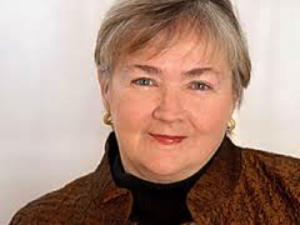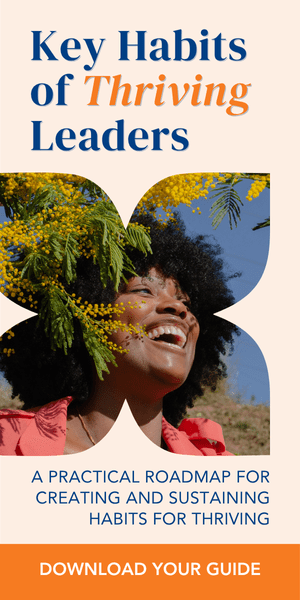 As a leader, what conditions can you set up at work to increase the possibility that people truly flourish? I recently posed the question to this week’s Face of Wellbeing Leadership Mary Jo Kreitzer. She’s on fire when it comes to leading wellbeing through her executive role as Founder & Director of the Center for Spirituality & Healing at the University of Minnesota. Her organization is implementing three strategies to build healthier families, workplaces, and communities: 1) programs to build well-educated, collaborative healthcare professionals who can provide whole person care, 2) interdisciplinary wellness research, and 3) the wellbeing platform Taking Charge to offer accurate, credible information and tools for anyone who wants to be more proactive in their own health and wellbeing.
As a leader, what conditions can you set up at work to increase the possibility that people truly flourish? I recently posed the question to this week’s Face of Wellbeing Leadership Mary Jo Kreitzer. She’s on fire when it comes to leading wellbeing through her executive role as Founder & Director of the Center for Spirituality & Healing at the University of Minnesota. Her organization is implementing three strategies to build healthier families, workplaces, and communities: 1) programs to build well-educated, collaborative healthcare professionals who can provide whole person care, 2) interdisciplinary wellness research, and 3) the wellbeing platform Taking Charge to offer accurate, credible information and tools for anyone who wants to be more proactive in their own health and wellbeing.
Although her mission-driven organization has wellbeing at its core, Mary Jo shares that it would easy to scientifically chart the determinants of wellbeing without actually living them at work. But that wouldn’t be wellbeing leadership. She explains, “Being a wellbeing leader means that I am focusing on wellbeing in my own life, but I am also working to create a culture of wellbeing in whatever environments I intersect with. This includes the work environment – in my case the university – and certainly within my family and community.”
What is Mary Jo’s advice for fostering a culture of wellbeing at work? Become clear about what wellbeing means in your unique workplace then get employees involved in demonstrating it in ways that make sense for them. As a role model, her organization’s wellbeing model has six dimensions that, when enacted altogether, support employees in feeling content, connected, energized, resilient, and safe.
- Strengthen Your Health. Mary Jo urges employees to create a well-life vision that is meaningful to them and to support each other in their wellbeing ambitions. She says, “One person on our team wants to improve health through cycling. Another is trying to make walking a habit. We share our wellbeing goals and hold each other accountable.” In this way Mary Jo and her team are walking on the wellbeing journey together.
- Work with a Purpose. Mary Jo says, “Purpose is very connected to wellbeing, so I ask people to consider for themselves: Am I doing work that is aligned with my higher purpose? Am I able to use my gifts, talents, and passions within my job?” She helps employees find a good fit between a larger purpose that feeds them and the work to be done. And she allows employees to operate outside of narrow, boxed-in job descriptions. In fact, Mary Jo nudges them to seek professional development that expands their minds and skills well beyond their current roles and to bring those new perspectives back into the workplace so that the whole team benefits.
- Make Relationships First. “In our workplace, we take interpersonal relationships very seriously,” Mary Jo claims. Whether in one-to-one relationships or project teams, for example, she invites employees to ask, “How can we communicate most effectively? How will we deal with conflict when it arises and make the best decisions? How will we engage in crucial conversations when we need a breakthrough to help us move into a completely new direction?” It is in the crucible of relationships where she believes immense wellbeing and growth is gained.
- Value Security. “Security is about knowing where you stand personally, whether it is in taking stock of your finances or your fears. The key here is to feel physically and emotionally safe,” maintains Mary Jo. “This means knowing where the health of the organization stands as well.” As a result, leading a transparent organization is high on Mary Jo’s list.
- Engage with the Environment Sustainably. “We have a lot of plants in our offices,” says Mary Jo, “And we have people with very green thumbs that tend to them.” But having a healthy relationship with the environment goes well beyond plants. Mary Jo suggests her team think of the environment as concentric rings starting with home and work and widening out to their neighborhoods, regions, and the entire planet. She believes the environment impacts health and wellbeing at each of these levels. And at each level, people impact the environment with their choices and actions.
- Build a Welcoming Community. Mary Jo encourages people to reach out to one another in a variety of ways, developing partnerships and learning communities rather than working in isolation. For instance, she’s designed collaborative gathering spaces within the physical workplace, and she and her team host a formal tea every month with people outside of the Center purely for the purpose of building camaraderie. Plus her staff recently decided that instead of just having names and titles on their office doors, they would add a quote or an Ask-Me-About. “My Grants Manager has ‘Ask Me About the new grants we just put in’ and my Communications Director’s ‘Ask Me About’ is totally different. It’s amazing how many people will walk down our halls and poke their heads in our offices just to say ‘well, it says to ask you about ____, so I’d like to hear more…’ This simple practice is helping us understand what really matters to each of us as human beings.”
READ MORE






